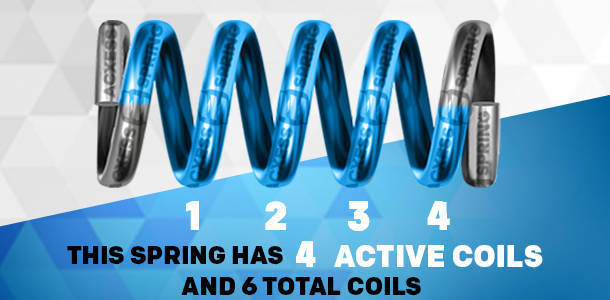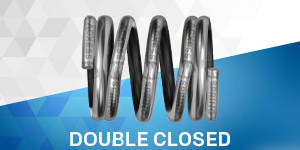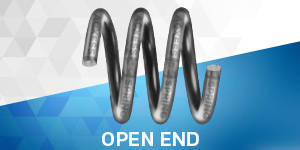Custom Compression Spring Coil Count
When a wire is wound 360 in a spiral shape, it creates coils, and this is how springs are made. Compression springs have pitch (space) between each coil and this allows them to fulfill their function of absorbing and releasing energy (compressing and then returning to their original shape). The amount of coils a spring has can determine different things, such as force, elasticity, and memory. That is why coil count is an important aspect of selecting or creating a custom spring.
Active Coils vs. Total Coils
When it comes to compression springs, it is important to differentiate between total coils and active coils. Active coils are the coils that have pitch in between (also known as open wound coils) and these deflect when a load is placed on the spring. Total coils are all the coils in the spring, including those without pitch (closed coils). This is the case in springs with close and ground ends, closed and square ends, and double closed ends. The ends of these compression springs are close wound, which means there is no pitch in between them. These are purposely left without pitch so they can give the spring more stability and allow it to have more support if it needs to stand upright.


Closed and squared ends
Closed and squared ends are most common and tend to have one closed end on each side of the spring. If you have regular closed ends or closed and ground ends, you must subtract two inactive coils from the total coils.

Closed and ground ends
Closed and ground ends are closed and squared ends that are ground at the bottom so that the spring can stand vertically on a flat surface. To count the active coils on a spring with closed and ground ends, you also subtract two inactive coils from the total coils.

Double close ends
Double close ends have two closed coils on each end (four closed coils in total). If you have double closed ends, you subtract four inactive coils.

Open ends
Open ends are the least common type of ends. If you have open ends, all coils are open wound so all coils are active. Therefore, the active coils equals the same number as the total coils.
The Amount of Coils Determines Force and Elasticity
The more coils the spring has, the more elasticity you will get. Sometimes more coils can also increase max load but this is not always the case. That is why it is so important to always consider all aspects of spring design, including coil count, when designing your custom compression spring. If you have any questions or need further assistance purchasing the perfect custom spring, be sure to contact us at: (951) 276-2777.





